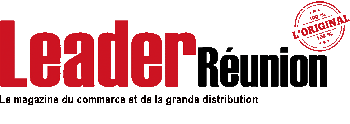In the early 1970s, two psychologists, Amos Tversky and Daniel Kahneman developed the theory of cognitive biases with the aim of explaining irrational decision-making in the economic field..
What is a cognitive bias ?
It is a psychological phenomenon leading to a distortion in the cognitive processing of information. Cognitive biases can explain illogical decision-making. Biases are rarely conscious and can lead to an error in perception, evaluation or even interpretation.
Availability heuristic : we rely on the information immediately available in our memory. Repeating a message, creates a consumer bias, for whom the message will become credible over repetition. This bias is also at the origin of rumors, des fakes news, or the construction of public opinion. The more the message is repeated and conveyed, the more subjects will adhere to it without seeking to verify the information from reliable sources. The availability heuristic often goes hand in hand with the illusory truth effect.
The effect of humor : if I tell you “offbeat” – restoration – humor » there should be a limited number of brands that come to mind; if I tell you “toilet paper – funny » a brand should come to mind. When information is perceived as funny, it is more likely that the subject will remember it. When communication is based on this effect, it allows you to create your own identity, and different from its competitors and to obtain relatively high sympathy capital. Double difficulty, remain funny in the long term if it is linked to the brand image and be taken seriously when necessary.
The anchoring effect : very common in marketing, the principle of the anchoring effect is to give a value which will be taken as a reference. for example, an item indicated at 250 euros initial price and sold at 25 euros. The prospect will have the impression of getting a good deal and will be more likely to buy it. The best known experience is that of three press offers : web offer at $59, paper + web offer at $125 and the paper offer at $125 (this third offer, unsaleable, serving as an anchor). By giving an anchor value, subscriptions to the web+paper offer increased by 43%.
The fashion effect : we are social animals and our herd instinct means that we can choose to follow the group in making decisions, sometimes even on very high amounts. The fashion effect is based on mimicry. If so and so bought this, I want to do the same. It is on this bias that influencer marketing is based.
The halo effect : a halo effect corresponds to a logic of secondary effect or influence of an element in a favorable or unfavorable way. This is for example the case when the entire range of products of a brand will benefit from its advertising campaign on a given product.. Or the opposite, when a specific product is recalled for health reasons but the entire brand (see all the group’s brands) finds itself suspected by consumers.
Ikea effect : also called possession effect, it takes its name from the brand offering kit furniture to build yourself. The consumer gives more value to something that he partly produced himself. This effect explains why some people are very attached to things that have little monetary value but which they built themselves., or that some sellers overestimate their house because they have done certain work themselves. This effect is also used in digital, when you invest in creating your playlist on a platform, that you create content on Snapchat etc..
Effet Barnum : the Barnum effect consists of creating content that applies to everyone but that the subject will take personally (horoscopes, “personality” tests). For newsletters, this is made easier by the possibility of customizing certain fields (last name, first name, birthday etc.) and create some segments and variations of content according to the behavior of your prospects/customers.
There are more than 200 cognitive biases, if you are curious and want to discover them, the codex of cognitive biases, the Buster Benson site and many videos are available on the internet.












